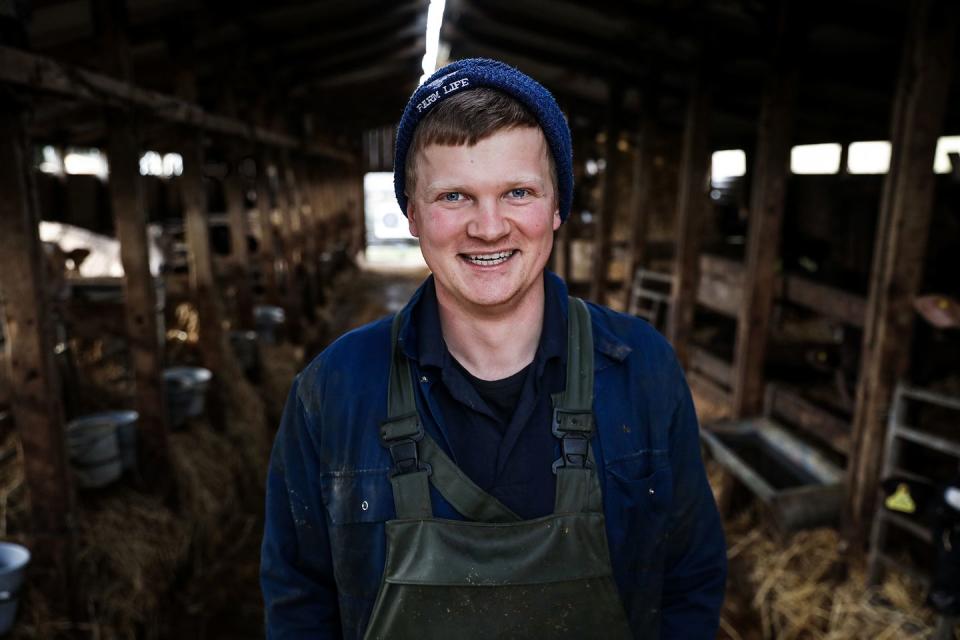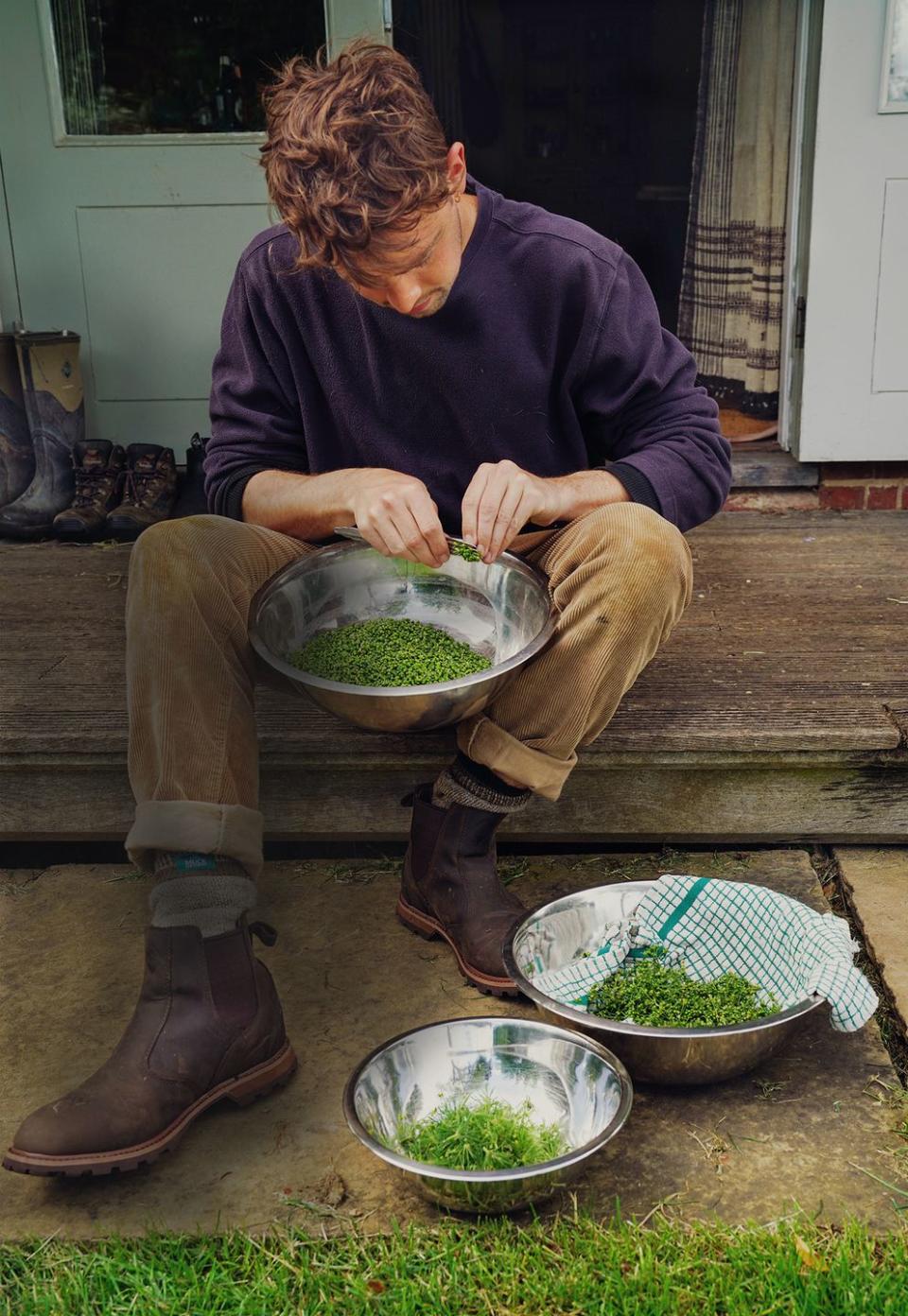5 farmers you need to follow on social media

Thomas Pemberton gets up at half past three most mornings. In a couple of hours, he’ll be milking the cows. But first, he has to edit a video for his YouTube channel. By day, Thomas is a dairy farmer in Lancashire. By night, he’s an influencer, filming snippets of his farming life for his 230,000 subscribers.
Tom Pemberton Farm Life is one of YouTube’s top farming channels and is part of a burgeoning trend. Exclusive figures from the social media network for Country Living reveal that views of its top 15 most subscribed channels about farming in the UK have risen by 50% over the past two years. The farmers we spoke to all noticed a particular spike in followers and likes over lockdown. Farmer-broadcasters now proliferate across every social media platform – YouTube, Instagram, Twitter, Snapchat and TikTok, better known for its blink-and-you’ll-miss-it music videos (head to @caenhillcc – a TikTok account with 2.8m likes – to watch geese waddle around Chris Franklin’s farm in Wiltshire).
Some farmers want to connect to others in the field for agricultural advice. Others are looking to ease the loneliness of long hours. And more just want to give people an insight into their lives. All are having an impact, changing the way we see farming and encouraging us to appreciate the origins of our food. “Back in the day, you might imagine an old man stuck in his ways,” Thomas says. “Farming isn’t like that – many of us are young, we love our jobs and social media gives us the chance to share that with the world.”
The Influencer
Hannah Jackson, contract shepherdess, @RedShepherdess, Instagram 37k, Twitter 34k, Facebook 24k followers

Hannah Jackson is a first-time farmer and contract shepherdess, on Brookside Farm in Croglin, Cumbria. She also guest-presented an episode of Countryfile earlier this year. Hannah sells her lamb through Instagram.
“Seven years ago, I knew nothing about farming. I’d just finished a degree in animal behaviour and had gone on a family holiday to the Lake District. I saw a lamb being born and knew instantly that was what I wanted to do but didn’t know how to get into it.
“Joining Twitter helped me meet farmers and see how they did things around the country. I got work experience with a sheepdog trainer and, within a year, my parents had bought a smallholding. In 2014, we moved to Cumbria from the Wirral. My work was initially as a contract shepherdess and now I also look after 120 of my own sheep and 200 lambs. With my partner, Danny, I farm 65 acres and use social media to inspire people from all backgrounds into farming, especially women.
“It’s good to show others what farmers really do. People love seeing a sheepdog being trained or a lamb being born. And while I’m always very positive, I include the difficult bits, too. In one post, I went as far as skinning a lamb. The lamb hadn’t survived the birth, so I showed people how I was removing its skin to put on another one. Instead of focusing on the lamb that hadn’t made it, I explained that I was doing this for the bereaved ewe, who would now be happier and healthier. People had no idea this happened – they were amazed.”
The Moo-tuber
Tom Pemberton dairy farmer, YouTube @TomPembertonFarmLife 230K subscribers, Instagram @tompemberton_farmlife 57k followers

Thomas Pemberton, a fifth-generation farmer, runs Pemberton Farm in Lytham St Anne’s, Lancashire, with his dad, Andrew. They sell beef, pork, chicken, lamb and milk through the farm shop.
“We’re a bit of a performing family – we like to have a laugh. One of my sisters is a dance teacher and now I make YouTube videos. I spend 70 hours a week farming and another 20 making films about it. Last year, I made a film for Defra showing a day in the life of a farmer – from milking the cows in the morning to making their bed of hay at night. It’s had more than 1.1 million views.
“I didn’t join social media to become an influencer. Four years ago, I posted a video to show people how to use the raw milk vending machine in our farm shop – and it took off. I put it on Facebook and got excited every time I got another view. I wanted more views and more followers, so I continued posting.
“My videos are pretty unpolished. I want to show people how much I love what I do. I don’t take myself too seriously. I’m just an ordinary guy having a good time – and farming. We’re not flash at the farm and it would be good for people to think: Tom’s like me.
“I’m only different in one sense – my social media presence. It’s opened up so many opportunities. I’ve been given a cow brush and a tractor by brands in exchange for using them in my films. And I have such a following that I now sell caps and sweatshirts with my own logo. It’s all a bit bonkers, but it’s helping the farm push forward. I’m proud of my following, but would never want to get complacent. A cow doesn’t care how many likes you get. You can’t neglect doing the actual farming, but social media is now a part of that. I want to enjoy it while it lasts.”
The Entertainer
Ally Hunter Blair arable farmer, @WyeFarm, Twitter 12k, Instagram 10k followers

Ally Hunter Blair sows wheat, barley, peas and soya on Weir End Farm, near Hereford. He has also just opened a glamping site. “In 2011, I was on the Channel 4 documentary First-Time Farmers and logged on to Twitter to see what viewers thought about me. I instantly regretted it – people were criticising me and my family. I felt quite hurt and came off Twitter for a few weeks, but then realised I could use social media differently.
"I went on TV to prove that British farming was not just a load of grumpy old men in flat caps. There’s a new generation. Farming is exciting and I wanted to get that across. I try to post daily, but only if something’s happened. I sit in my tractor for up to 16 hours a day and it can get quite lonely. Often, I’m scrolling through other farmers’ feeds for advice (I follow Jake Freestone – @No1FarmerJake – for tips on increasing biodiversity) or chatting to other people in tractors. I can spend five hours a day on social media. It’s therapeutic.
“I also post ‘combine karaoke’ videos of me miming along to songs in my tractor or around the farm. I put the first one, Let it Go from Frozen, on Twitter in 2015, and it got 10,000 views. I then put it on Facebook, where it’s had more than 140,000. I make new ones every year. I once sang Miley Cyrus’s Wrecking Ball swinging from a rope on a beam in the barn and almost got stuck. If it gives someone who’s having a bad day a laugh, then I’m happy. Last year, Britain’s Got Talent asked if I’d audition. I had to decline. I’m actually tone deaf.
“Having a social media profile has led to other TV – Born Mucky, showing life on British farms, was on Quest this year – and I’d love to do more. I’ve been thinking about whether to pay someone to farm while I push my media presence. Maybe this is where farming is going – and you’re only young once.”
The Foodstagramer
Julius Roberts Dorset smallholder, Instagram @telltalefood, 68k

Former chef Julius Roberts, 27, rears four pigs, 25 goats, 50 Hebridean sheep, two dogs and a flock of chickens in Dorset. He also keeps bees and grows vegetables. He sells his produce through Instagram. “Three years ago, I gave up my job as a chef at a London restaurant to start a smallholding in Suffolk at our family holiday home. I loved cooking, but was getting home at 3am, pallid and grey. Cheffing can take it out of you. I’d always loved Hugh Fearnley-Whittingstall and thought I’d have a stab at my own River Cottage. I bought four Mangalitza pigs but had no idea if I could make it work.
“I started using Instagram to track my progress. I’d rarely used social media and didn’t really like taking pictures – things always look better in real life – but I didn’t worry much about it. You can’t take a bad picture of animals in the countryside. I soon bought goats, sheep, dogs and chickens, and am now almost self-sufficient. It’s going so well that I’ve moved to a larger place in Dorset.
“I post a lot of pictures of dishes I’ve made using my ingredients and follow food photographer Joe Woodhouse for inspiration (@table_top_joe). I make money from brands by using their cooking equipment in videos. But it’s one thing working with food and another showing where it comes from, which is just as important to me.
“I haven’t been afraid to document my mistakes. A couple of years ago, one of my billy goats escaped from his barn into the field with the girls and got them pregnant at the wrong time of year. It was a particularly cold winter. I had to take buckets of hot, sugary water to give them an energy boost during the day and bring them inside in the evening, wrapping them in a blanket and warming them by the fire.
“My move was a leap of faith, but it’s paid off tenfold. I want to show how anyone can live more sustainably by eating well, even if you don’t leave city life, like me.”
The Social Networker
Janet McQuistin cattle breeder, Instagram @Airyolland 8k, Facebook @KitchenCoosEwes 5k

Janet McQuistin breeds Highland cross Whitebred Shorthorn calves and Beltex sheep on Airyolland Farm in south-west Scotland, with her husband Neale. “I’ve always carried a camera on the farm. I breed and sell cows and sheep, so I like to make sure I catch them at their best. In late 2013, my daughter, then 18, introduced me to Instagram and I quickly discovered other women farmers.
"I follow Mary Brough in the Lake District (@broughmary) – I like her hashtag #oldshepherdess – and Wilma Cameron (@CameronsFarms) on the west coast of Scotland. Social media is great for seeing what others are up to. You can feel quite isolated when you’re farming, and we understand what it’s like when things get difficult.
“I’m always looking out for a good shot. One winter, I was herding sheep and they began following me in a line. I parked my quad bike, stood on it and snapped away. My photos have attracted thousands of followers from around the world. I get a lot of messages from Americans coming to Scotland, keen to see a Highland cow. Neale, my husband, has set up a tour business, Kitchen Coos and Ewes, on the back of it. This year, we’ve been posting virtual tours on Facebook. I keep thinking my Instagram page will get repetitive, but then an animal surprises me. We have a lot of wildlife on the farm, including red squirrels. I’ve yet to get one on camera. That’s my next goal.”
This interview appeared in Country Living October issue. SUBSCRIBE NOW
Like this article? Sign up to our newsletter to get more articles like this delivered straight to your inbox.
You Might Also Like


